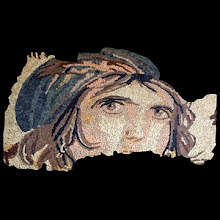



 We see Mosaics as a great way of art and expression.
We see Mosaics as a great way of art and expression.
Mosaics is one of the first artifacts that humans showed their emotions, love and daily lives. It is one of the earliest form of art and the only remainings from some of the biggest civilizations of the world. This blog is to witness the development of mosaics, civilizations and creative arts. www.mozartdeco.com for more mosaic and stone arts.




With the rise of the Byzantine Empire from the 5th century onwards, centred on Byzantium (now Istanbul, Turkey), the art form took on new characteristics. These included Eastern influences in style and the use of special glass tesserae called smalti, manufactured in northern Italy. These were made from thick sheets of coloured glass. Smalti have a rough surface and contain tiny air bubbles. They are sometimes backed with reflective silver or gold leaf.
The mosaic below is from the ceiling of the baptistery in Florence, Italy. Other spectacular examples can be found in Ravenna, Venice and Sicily and in Istanbul.
Whereas Roman mosaics were mostly used as floors, the Byzantines specialised in covering walls and ceilings. The smalti were ungrouted, allowing light to reflect and refract within the glass. Also, they were set at slight angles to the wall, so that they caught the light in different ways. The gold tesserae sparkle as the viewer moves around within the building.
Roman images were absorbed into the typical Christian themes of the Byzantine mosaics, although some work is decorative and some incorporates portraits of Emperors and Empresses.

By 200 BC, specially manufactured pieces ("tesserae") were being used to give extra detail and range of colour to the work. Using small tesserae, sometimes only a few millimetres in size, meant that mosaics could imitate paintings. Many of the mosaics preserved at, for example, Pompeii were the work of Greek artists.
The mosaic here shows the god Neptune with Amphitrite (on the right) and is in Herculaneum, Italy. It is a wall mosaic which uses pieces of glass to give the vivid colours and reflect light. Glass was not suitable for floor mosaics. Here, the tesserae were mainly small cubes of marble or other stone. Sometimes bits of potte
